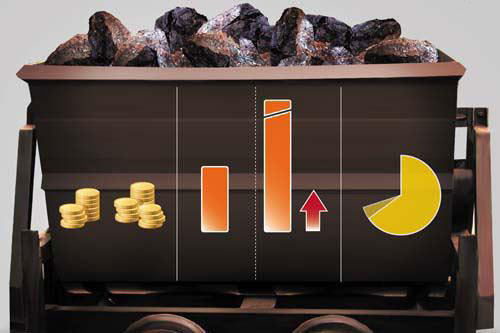Stricter winter production cuts in China from October are expected to have a significant influence on the entire domestic steel market in comparison with the last heating season, industry sources told Metal Bulletin this week.

“Prices will likely be on a bullish trend later this year like how they did last year, and export transactions will be hard to conclude,” an export trader in east China said, citing competitive offers from steelmakers in other countries filling the gap left by an absence of Chinese steel in the Asian spot market.
China has extended the duration of production cuts for its steel industry during the winter heating season by two months this year - it will kick off on October 1 and end in March 31 next year in 28 cities in north China, according to a draft pollution control plan released earlier this month.
This compares with the last period of winter production cuts that lasted from November 15 last year until March 15 this year.
The draft plan aims to cut the steel industry’s emissions by lowering production. Steel output rates will be capped at 50% of capacity in Tianjin city, the cities of Shijiazhuang, Tangshan, Handan and Xingtai in Hebei province, and Anyang city in Henan province.
In the remaining 22 cities scattered across the provinces of Hebei, Shanxi, Shandong and Henan, steel production rates will be cut by at least 30%. The specific limits will be decided by the respective provincial governments.
Tianjin and Xingtai are two new cities that are required to cut output by 50% of capacity this year.
Steel mills will need to shut down grouped facilities, including sinter plants and coke ovens, if their blast furnaces are to be suspended, according to the draft plan. This is the first time that sinters plants and coke ovens will be required to be idled if the blast furnace in the same production line is mothballed.
Steel mills that already meet ultra-low emission standards will not be subject to the production restrictions throughout the period. They will only need to cut output by 50% when heavy air pollution warnings are issued.
The Chinese government has targeted these cities to implement the production caps because they are the key steelmaking bases in the country, collectively accounting for 355 million tonnes – over 40% - of annual output. In 2017, Chinese steelmakers produced some 832 million tonnes of crude steel.
Data from the country’s National Bureau of Statistics shows that crude steel output in the five months of stipulated winter production cuts between November 2017 and March 2018 fell to 137 million tonnes from 144 million tonnes in the same period a year earlier.
Immediate response muted
The draft plan’s immediate impact on spot prices has not been as large as some industry sources had expected, with trading levels in the domestic and export markets for prompt-delivery and September-shipment cargoes not showing any sharp responses. This is mainly due to weak demand among both domestic and overseas buyers.
HRC prices in east China increased to 4,310-4,320 yuan per tonne on August 7 from 4,280-4,290 yuan per tonne on August 2.
Export prices have instead fallen. Metal Bulletin’s fob China HRC Index has dropped to $571.97 per tonne on August 7 from $575 per tonne on August 2.
Rebar prices in east China increased to 4,230-4,270 yuan per tonne on August 7 from 4,150-4,200 yuan per tonne on August 2.
Export prices have stayed largely stable. The Metal Bulletin fob China Rebar Index was at $558.08 per tonne on August 7, compared with $557.08 per tonne on August 2.
Larger impact on HRC
The production cuts in northern China will likely affect HRC prices more in comparison with other steel products because of the higher capacity for the production of the flat steel product in that region, a Tangshan-based trader said.
“HRC futures have been rising, bolstered by expectations that the supply of HRC will be tighter once the production cut starts,” he said.
However, there may still be limiting factors to the upside, other traders said, because steel mills can still substitute iron ore and coking coal with ferrous scrap if they still want to continue production.
“Steel mills can buy scrap to produce hot metal, which previously needed to be produced from blast furnaces,” he said.
Weak downstream demand from the automotive sector could also dampen price increases because car production in China is not expected to grow as rapidly as previous years.
China produced 14.06 million vehicles in the first half of this year, up 4.2% on the year. However, this growth is 0.49 percentage points below that experienced in the same period of last year, according to the China Association of Automobile Manufacturers.